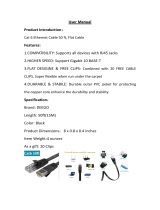
3
DANGER, W
ARNING and CAUTION are signal words
used to identify the level of hazard. However
, regardless
of the hazard, be extremely careful.
DANGER
signals an extreme hazard that will cause
serious injury or death if the recommended precautions
are not followed.
WARNING
signals a hazard that may cause serious injury
or death if the recommended precautions are not followed.
CAUTION
signals a hazard that may cause minor or
moderate injury if the recommended precautions are not
followed.
T
wo other words are also used to highlight information.
“Important” calls attention to special mechanical
information and “Note” emphasizes general information
worthy of special attention.
The left and right side of the machine is determined by
standing behind the handle in the normal operator
’s
position.
WARNING
The engine exhaust fr
om this pr
oduct contains
chemicals known to the State of California to
cause cancer
, birth defects, or other r
eproductive
harm.
Safety
This mower meets or exceeds CPSC blade safety
requir
ements for walk behind r
otary mowers and the
B71.4–1990 specifications of the American National
Standards Institute. However
, impr
oper use or
maintenance by the operator or owner can r
esult in
injury
. T
o r
educe the potential for injury, comply with
these safety instructions and always pay attention to
the safety alert symbol
which means CAUTION,
W
ARNING and DANGER. Failur
e to comply with
these instructions may r
esult in personal injury
.
Safe
Operating Practices
This
product is capable of amputating hands and feet and
throwing objects. Always follow all safety instructions to
avoid serious injury or death.
This mower is designed for cutting and recutting grass or
,
when equipped with a grass bag, for catching cut grass.
Any use for purposes other than these could prove
dangerous to user or bystanders.
General
Operation
1. Read
this manual carefully before operating the
mower
. Become familiar with the controls and proper
use of the mower
. Never allow children to operate the
mower or adults to operate it without proper
instructions.
2.
Keep everyone, especially children and pets, away
from area of operation. Thoroughly inspect area where
mower will be used and remove sticks, stones, wire,
and debris.
3. W
ear long pants and substantial shoes. Do not operate
mower while wearing open-toed shoes, jewelry
, loose
clothing or when barefoot.
4.
Always wear safety glasses or eye shields during
operation to protect eyes from foreign objects that may
be thrown from the machine. W
earing of hearing
protection, protective gloves and a safety helmet is
advisable and may be required by local regulations.
5.
Check fuel level before starting engine. Because fuel
is highly flammable, handle it carefully
.
A.
Use an approved container
.
B.
Fill fuel tank outdoors, not indoors.
NEVER ADD
FUEL T
O AN ENGINE THA
T IS RUNNING
OR HOT
.
C.
Install gas cap on fuel container and gas tank, and
wipe up any spilled gasoline before starting engine.
6.
Keep all guards, shields, safety devices, grass catcher
,
dischar
ge tunnel plug or optional dischar
ge chute in
place. Repair or replace damaged or missing parts,
including decals. Check all safety devices before each
use.
7.
Blade and traction drive are designed to stop when the
control bar is released. Ensure control bar functions
properly before and during each use of mower
.
While
Operating
1. Do
not run engine indoors.
2.
Always maintain secure footing. Keep a firm grip on
the handle and walk; never run. Never operate mower
in wet grass. Mow only in daylight or in good artificial
light.
3.
Mow across the face of slopes; never up and down.
Use extreme caution when changing direction on
slopes. Do not mow excessively steep slopes.
4.
Keep face, hands, and feet away from the mower
housing and cutter blade when the engine is running.
Stay behind the handle until the engine stops and keep
clear of dischar
ge opening at all times.




















